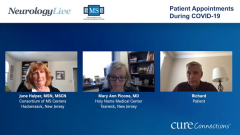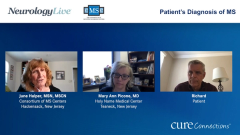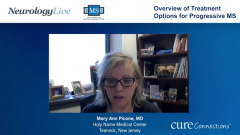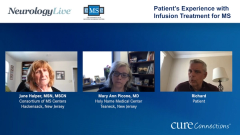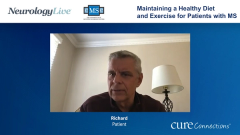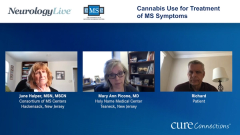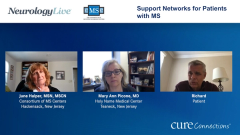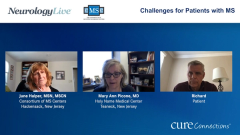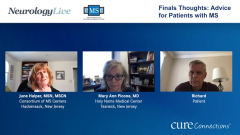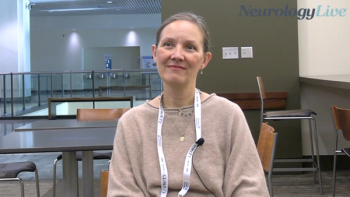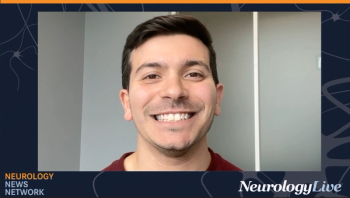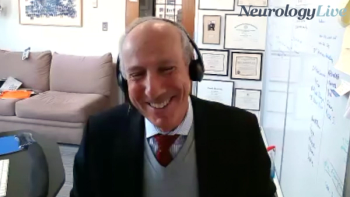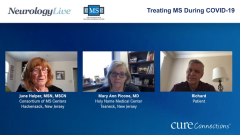
Treating MS During COVID-19
Mary Ann Picone, MD, describes the incorporation of televisits for multiple sclerosis during COVID-19.
Episodes in this series

June Halper, MSN, MSCN: Hello, and thank you for joining this Neurology Live® Cure Connections® program titled “Strategies for Managing Progressive Multiple Sclerosis During COVID-19.” This program is the second in the series designed for those affected by or interested in multiple sclerosis [MS]. We hope to provide you with different perspectives on a challenging disease. Our faculty represents a community of caring clinicians, patients, and families. I am your host, June Halper, a certified adult nurse practitioner who has specialized in MS since 1978. I’m the CEO of the Consortium of MS Centers in Hackensack, New Jersey, an organization that has set up a unique model of care. That model of care is represented by our panel. Joining us is Dr Mary Ann Picone, whom I used to work with at the MS Center at Holy Name Medical Center in Teaneck, New Jersey. Dr Picone is an MS specialist, and she recently became a certified MS doctor, and we’re very proud of her. Also joining us is Richard, who’s going to share the details of his journey with multiple sclerosis. Thank you for joining us. Let’s begin.
Dr Picone, this has been a very difficult year. Actually, we’re in 2021, but 2020 was a terrible year, and you’ve had a very busy practice. How did you incorporate telehealth into your practice?
Mary Ann Picone, MD: First, thank you and NeurologyLive® for inviting me to be part of this program. When June and I started working together many years ago, she was the person who, through her efforts in MS, introduced me to the comprehensive care model in MS. We continue to try to follow that.
It has been a tough year. COVID-19 really turned everybody’s lives upside down, including patients and our practice here. When it began, we had to pivot to see how we could best serve patients because many people were fearful of leaving their homes. There were shelter-in-place restrictions, so many people were fearful of leaving their homes and coming to doctor’s offices. But they needed to keep up with their medical care, so we did televisits. We did a lot of televisits initially so that patients could still interact with their physicians. We could monitor what they were doing, make sure they were taking their medications, and see if any changes had to be made. It helped them avoid coming to the office.
Patients who were getting infusions were more of a challenge because many people were fearful of coming in. Our hospital here at Holy Name was part of the epicenter of COVID-19, so many patients were very scared of being exposed, but they also had to be able to continue their infusions. As an MS community, we were not sure if it was safe for patients to continue with their Ocrevus infusions, Tysabri infusions, and other therapies. “Should we hold their infusion? Should we delay it a couple of months?” Those were questions we had. You had to weigh the benefit of perhaps holding their therapy so that there might be less risk of exposure to COVID-19, but you didn’t want their MS disease activity to get worse. It was a real challenge.
June Halper, MSN, MSCN: Yes. The psychological impact of it seemed to be significant. How did you handle those, Dr Picone? I’m sure patients were very frightened and pretty much socially isolated. How did you handle that?
Mary Ann Picone, MD: It was very frightening. There was a lot of anxiety and a lot more depression. We’re fortunate that we have a neuropsychologist who works with us who was also able to do telehealth visits with his PhD students. He was working with patients on their anxiety and depression issues, giving them an outlet to discuss what was going on in their lives.
June Halper, MSN, MSCN: How did you handle specialists referring patients to you with newly diagnosed MS?
Mary Ann Picone, MD: Those were the most challenging patients because the patients who were already established at the center and had follow-up visits were able to do telehealth. It was a little easier. It’s very difficult to do a televisit with someone we’ve never seen before, who’s newly diagnosed, who might be referred to us from another physician in the area or other family member. You really need to see someone who’s newly diagnosed in person, so those patients came in person. Emergency patients also came in person. Some patients delayed their visit. Some patients who were newly diagnosed and had appointments scheduled delayed their visits if they were reluctant to come in. It was also a challenge for clinical research.
June Halper, MSN, MSCN: Oh, right—the patient visits.
Mary Ann Picone, MD: That was a huge problem.
June Halper, MSN, MSCN: But you made it through we hope.
Mary Ann Picone, MD: We made it through, and we’re still doing a mix of televisits and in-person visits.
June Halper, MSN, MSCN: Hybrid, right?
Mary Ann Picone, MD: Yes, hybrid.
June Halper, MSN, MSCN: I want to thank our audience for watching this NeurologyLive® Cure Connections®. If you enjoyed this program, please subscribe to our e-newsletter to receive information about upcoming programs.
Transcript Edited for Clarity
Newsletter
Keep your finger on the pulse of neurology—subscribe to NeurologyLive for expert interviews, new data, and breakthrough treatment updates.

